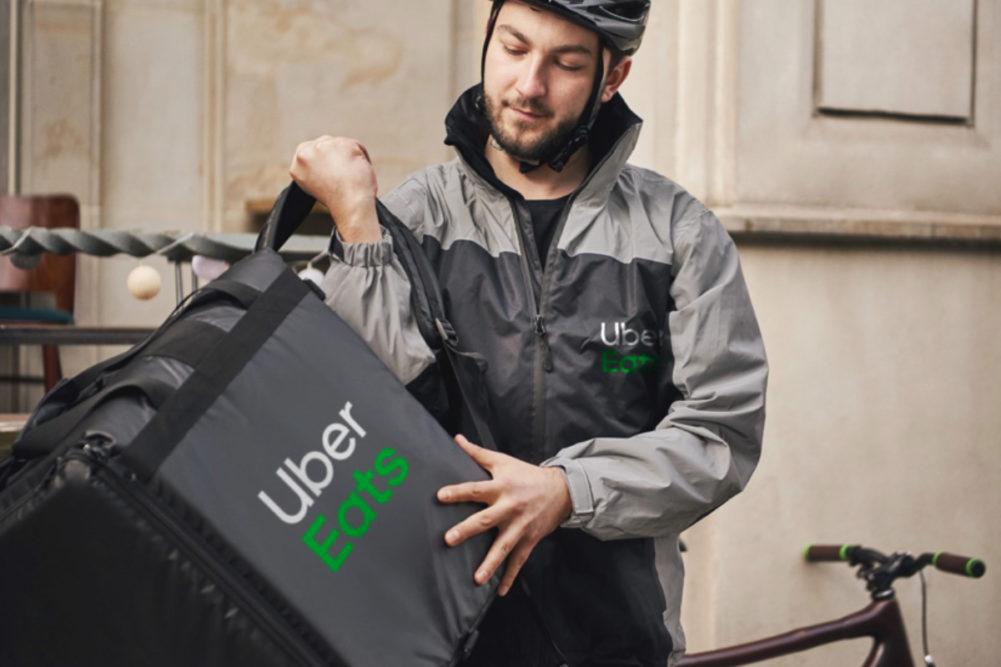KANSAS CITY — Consumer dollars are shifting as restaurants close for in-store consumption and switch to off-premises only. Online grocery and meal kit delivery platforms are seeing a surge in orders.
Demand for foodservice delivery has so far been a mixed bag.
Some of the largest delivery providers, including Uber Eats, DoorDash, Postmates and Grubhub, have declined in growth since February, according to Earnest Research, a data analytics company providing insights on consumer spending behaviors. The company examines credit and debit card spending of millions of anonymous US consumers.
Year-over-year growth across all four platforms was 16% for the week ended March 16, down from 21% the week before and 26% the week ended March 2. Positive year-over-year growth at Grubhub, DoorDash and Postmates was down from previous weeks. Growth at Uber Eats was down 3% from a year ago.
“Decelerating delivery aggregator spend growth is likely due to increases in grocery spend offsetting restaurant delivery spend,” said Michael Maloof, associate director, consumer brand insights, at Earnest Research.
Demand for delivery has varied during the outbreak, Matt Maloney, chief executive officer at Grubhub, told Market Watch.
“In some markets it’s staying stable, some are doing much better, and others are slowing,” he said. “It’s not obvious how it will impact business in the long term as the supply of restaurants are transitioning.”
He added that as many as 30% of restaurants could close during the outbreak due to the cost of maintaining off-premises capabilities.
Uber Eats said demand has been highest in hard-hit areas.
“The impact has varied widely city-by-city and country-by-country, but cities like Seattle and San Francisco have seen an uptick in food delivery requests,” said Pierre-Dimitri Gore-Coty, head of Uber Eats.
More restaurants offer delivery
The number of restaurants offering delivery has surged in the wake of the coronavirus (COVID-19) pandemic. Grubhub and Uber Eats have received up to 10 times their usual restaurant leads.
“In the United States and Canada, we’ve seen a significant increase in the number of restaurants looking to offer delivery as dine-in has been restricted—including a 10 times increase in self-sign-ups,” Mr. Gore-Coty said.
Delivery companies are moving to help struggling restaurant partners.
Grubhub delayed fee collections “for the foreseeable future.” Uber Eats waived delivery fees for more than 100,000 independent restaurants across the United States and Canada.
“We will also launch daily dedicated, targeted marketing campaigns — both in-app and via email — to promote delivery from local restaurants, especially those that are new to the app,” said Janelle Sallenave, head of Uber Eats, United States and Canada. “To help to create a more reliable and immediate source of cash flow, even in uncertain times, we’re rolling out a new payment option for restaurants. This new feature will allow restaurants of all sizes to opt into daily payments on all Uber Eats orders, rather than the typical weekly billing cycle.”
DoorDash suspended commissions for independent restaurants through the end of April. It also waived commission fees on pickup orders for all existing partners and added additional commission reductions for some merchants. It earmarked up to $20 million in merchant marketing programs to generate more revenue for restaurants already on the platform.
Postmates launched a pilot program that temporarily waived commission fees for small businesses in the San Francisco Bay area.
Adding drivers, improving safety
Restaurants and delivery companies have introduced several new safety measures, including tamper-proof packaging, to reduce health risks for drivers and consumers. No contact drop offs are now the default delivery method for all four third-party platforms.
Restaurants that specialize in off-premises services, including Domino’s, Pizza Hut and Papa John’s, have added no-contact deliveries. They also are hiring thousands of new workers to meet increased demand for delivery.
Papa John’s and Domino’s announced plans to bring on an additional 10,000 new restaurant team members. Pizza Hut is speeding up its hiring process to fill 30,000 new positions. New drivers can now be on the road in as little as five hours, the company said.
Finding drivers in hard-hit areas hasn’t been a problem for Grubhub, Mr. Maloney said.
“The delivery market for drivers is really good,” he said. “I was concerned there would be a lot of attrition, but I think drivers are looking to replace lost income.”
Free delivery
A growing number of restaurant chains are offering free delivery.
Chipotle partnered with Uber Eats to waive delivery fees for orders over $10. McDonald’s eliminated delivery fees until April 6 on orders of more than $15 through DoorDash and Uber Eats. Burger King and Wendy’s are offering free delivery on orders of $10 or more through Grubhub and Postmates.
Taco Bell waived delivery fees on Grubhub orders exceeding $12. Dunkin’, KFC and El Pollo Loco also announced free delivery through the platform. Carl’s Jr. waived delivery fees through Postmates.
Denny’s, Noodles and Co., Pieology, Chili’s, Wingstop, and IHOP are just some of the companies offering free delivery through their website or mobile app.






